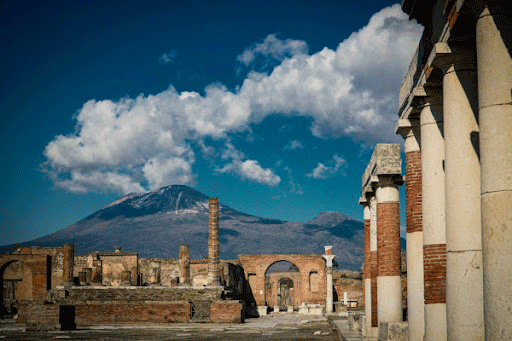It is always an extreme challenge to ponder and preview where climate change will hit the hardest. Yet, the United Nations climate action decree tells us a dire, widespread and uncomfortable truth — every country on every continent will be affected by the consequences of extreme weather.
The naked eye can witness the variations in weather patterns: sea levels rising, flooding cities, extreme droughts and food shortage pressuring millions of people to relocate. Even though the climate pact between countries aims to secure and prepare for severe climate events, the green gas emissions created during the COVID-19 pandemic are expected to spike to unseen higher levels causing the phenomenons to aggravate.

In the face of these substantial events, what about cultural heritage, the foundation of our civilization? What will happen if acid rains, earthquakes and floods wipe out ancient sites? Are they even important? I would say, extremely.
The Climate Action and Sustainable Cities and Communities targets of the United Nations Sustainable Development Goals intend to address these exact concerns by strengthening resilience and adaptive capacity to climate-related hazards, promoting mechanisms that can improve measurements to prevent loss of life, heritage and culture.
The Italian government in partnership with the European Commission gathered a great number of funds to protect their ancient zones — the Colosseum in Rome back in 2019 and currently the ancient city of Pompeii — by incorporating an innovative system which protects it from drastic weather events. The famous city is known to be significantly affected by climate occurrences, with the volcanic eruption of Mount Vesuvius in AD79 almost dismantling the city to the ground. More recently, in 2010 to 2011, a number of structures collapsed due to water infiltrations and heavy rain.
These alarming phenomena and decades of rehabilitations led to the launch of The Great Pompeii Project, spearheaded by the former director of restorations, Masiimo Osanna, which plans to install sensors, infrared and satellite technology among the ruins to shelter it from strong winds, extreme changes in temperature and heavy rainfall.
“Satellite data will be important; we can use it to observe changes extensively and in a detailed manner, with infrared, drones, MEMS technology, which involves small, box-like sensors that are connected by radio waves," states Gabriel Zuchtriegel, the newly appointed head of the Archeological Park of Pompeii.
“With these methods, we could relatively clearly understand what has happened and act as fast as possible before damage occurs. The presence of water, humidity in the walls has often led to collapses in the past.”
Consolidating a budget of €105m, the proposal strives to preserve, maintain and improve the site by introducing for the first-time regular maintenance and by improving the informative system created back in 2015, which centralizes data mapped across the site using geographic information.
Despite the expanding high-tech monitoring accurately and the calculation of the human and financial resources it requires to confront climate change, Gabriel Zuchtriegel points to the concerns regarding the amount of data produced, ensuring it doesn't hinder the ongoing maintenance work.
"We are already swimming in data. If we are not careful, the new data will simply be another burden," says Zuchtriegel.
Previous site moniterizations, like that of the fifth-century BC Temple of Neptune, generated worrying data regarding the rate at which climate events are affecting these ancient locations, showing extreme weather causing a quicker deterioration of the temple structures. Therefore, the new system will provide a constant flow of information capable of assessing long term changes.
Ultimately Pompeii's on-site team of 55 builders, restorers, archeologists, and architects can plan with greater precision the maintenance needed. The project started in September of 2021 and will run until the end of 2022. A dozen of Salerno university students, each with six-month scholarships, will install low energy systems on the ceilings, walls, furnishings, roofs, decorative items and floors of the structures located in Regio VI subdivision — a site notable for buildings including the House of the Vestal Virgins and the House of Sallust — acting as a prototype to re-engineer Pompeii's monitoring system.
This preservation endeavor ensures ancient sites are shielded from uncontrollable weather disturbances. It marks the searing significance that art and heritage has on a country's culture — something that often goes overlooked in today's society.
